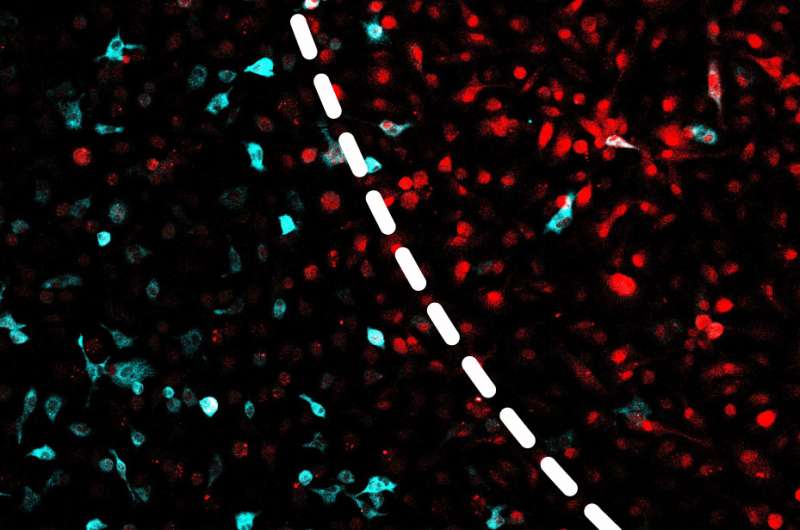New tool uses UV light to control inflammation

Black light does more than make posters glow. Cornell researchers have developed a chemical tool to control inflammation that is activated by ultraviolet (UV) light.
The method will allow scientists to study inflammation and the immune system, and may one day prove effective as a targeted therapy for inflammatory diseases, while minimizing side effects to healthy tissues.
The researchers, who reported their results in a study published in October in the journal Chemical Science, designed a small molecule that is capable of controlling an immune response when exposed to UV light radiation.
"Currently, there aren't a lot of tools that are able to manipulate the immune system in a spatio-temporal fashion," said Pamela Chang, assistant professor of microbiology and immunology, and the paper's senior author. Bibudha Parasar, a graduate student in Chang's lab, is the paper's first author.
"We are pushing the forefront of developing new technologies to control inflammation and the immune system, with the ultimate goal of being able to study these biological pathways and perhaps develop therapies for inflammatory diseases," Chang said.
Inflammation is caused by the immune system as one of the body's responses to eliminate infectious pathogens and other foreign or dangerous agents. When inflammation becomes chronic, it can lead to a host of diseases, including asthma, multiple sclerosis, rheumatoid arthritis, colitis and Crohn's disease.
The researchers created a chemical probe that inhibits a reaction mediated by enzymes called histone deacetylases (HDACs). These enzymes regulate genes that turn on when the immune system is challenged and promote inflammation. HDACs also have inhibitors that suppress this inflammatory response, and the probe specifically activates these inhibitors but only in the presence of UV light. This is especially useful since HDACs are ubiquitous and have other biological effects, and most drugs affect the entire system, leading to unintended consequences.
"If you turned off all the HDACs in the body, you would probably be hitting a lot of pathways that you didn't want to turn off," said Chang. "We can control when and where we turn off the HDACs using light. The idea is that you can actually target the tissue that has chronic inflammation and regulate it by selectively inhibiting HDACs in the tissue that's affected."
Photodynamic therapies are being developed and have existing infrastructure in the clinic for the potential use of the new tool to inhibit inflammation in patients with inflammatory diseases, Chang said.
More information: Bibudha Parasar et al, Chemical optogenetic modulation of inflammation and immunity, Chem. Sci. (2017). DOI: 10.1039/c6sc03702j
Journal information: Chemical Science
Provided by Cornell University


















